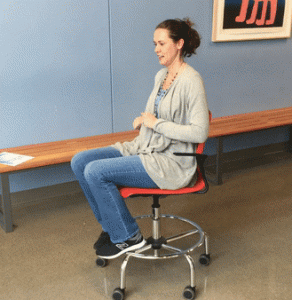55 No Locomotion For You!
Isolated Systems
In the previous units we have applied Newton's First Law of Motion to analyze objects that are not changing velocity so we could be sure the net force on the objects was zero. We also analyzed internal forces within the objects, such as the tension forces within tendons cause them to resist stretching, but those internal forces could not bring the object out of equilibrium and change the velocity. Now we want to analyze collections of objects, known as systems. We want to study the effects of internal forces between components of the system and external forces from objects outside the system. When applied to a system Newton's First Law of Motion states that the system velocity will not change unless the system experiences a net external force.
For example, imagine an astronaut drifting along way out in empty space, far from any planets or stars. She could wave her arms and legs all around, but she could not change her drift velocity. She could kick her legs or wiggle her arms, she could twist back and forth with her upper body rotating opposite to her lower body, but she could not generate any overall changes in speed, direction, or rotation.
Everyday Example: A lone body
The following GIF shows a person attempting to change their overall velocity while sitting in a chair with wheels. The wheels minimize friction so that person + chair system is (almost) isolated (in the horizontal directions).

Notice that the person is not having much luck changing their overall velocity (center of mass velocity). They are unable to change the horizontal velocity or the rotational velocity (when her upper body rotates one way, her lower body and the chair rotate the other).
We say that the astronaut is an isolated system because she not experiencing any external forces. Certainly she experiences forces between the parts of her body, but when considering the astronaut as our system those forces are internal to the system and they cannot change the velocity of the system as whole.
An object will not change it's motion unless acted upon by an external force.
A collection of objects to be analyzed. Forces between the objects are considered internal forces, while forces applied by objects outside the system are considered external forces.
a system for which neither thermal energy or particles are allowed to leave or enter.
Forces applied by objects not contained in the system being analyzed.

